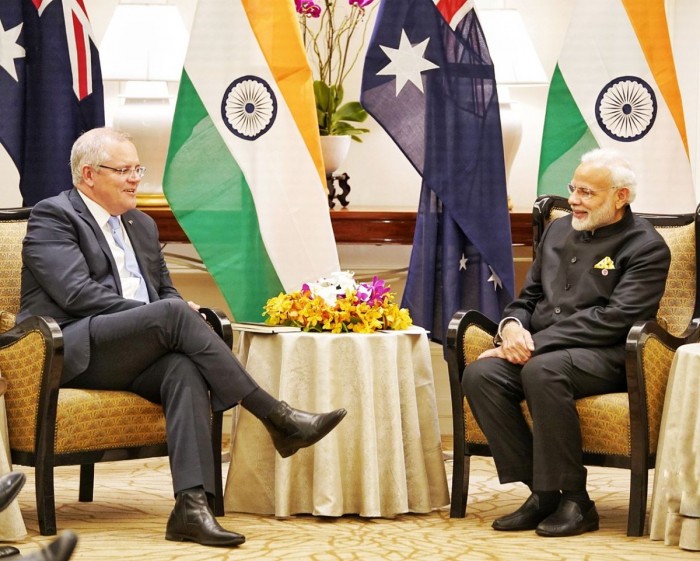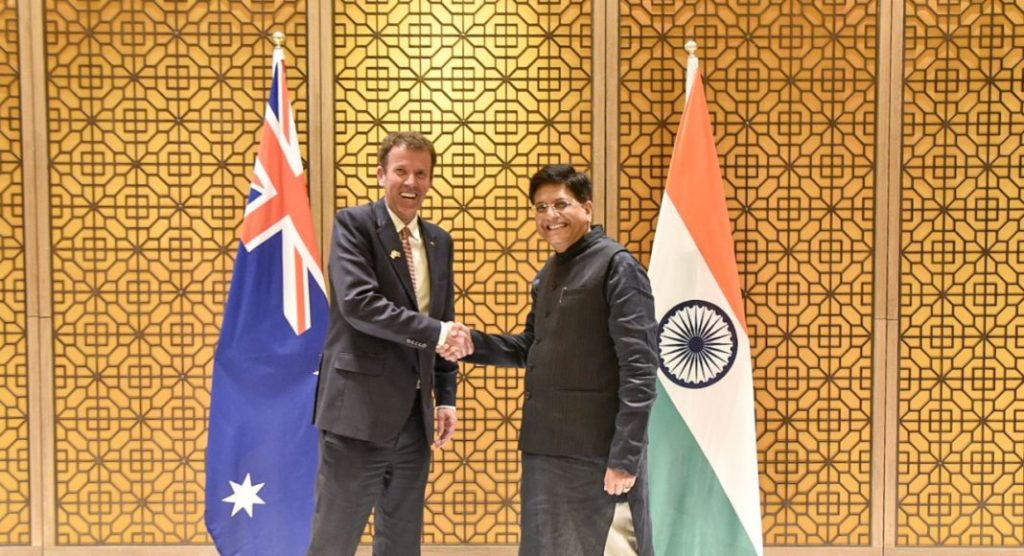India opens new opportunities for Aussie agriculture

· Interim Australia-India Economic Cooperation and Trade agreement (IA-ECTA) reached.
· Reduces or eliminates tariffs and sets new quotas for key agriculture commodities
· Entry into force in the second half of 2022.
· Australia and India will look to finalise a comprehensive agreement by the end of the year to secure even broader outcomes on agriculture

Australia and India have reached agreement for an interim FTA that includes new market access opportunities for a range of agriculture commodities – an important first step to opening the massive Indian market to Australian farmers and agricultural exporters.
Minister for Agriculture and Northern Australia David Littleproud welcomed the new market access for a range of agriculture commodities in the interim agreement.
“This interim agreement will open up new and significant market access through the elimination or reduction of tariffs on a range of agricultural exports,” Minister Littleproud said.
“It covers nearly 90 percent of our current agriculture exports to India.
“Those include sheep meat, wool, wine, horticulture, fisheries and forestry products.
“It will also provide new quotas for lentils, citrus, almonds, cotton and pears that will give Australian exporters a competitive advantage into the Indian market.
“Australia will be looking to secure even broader outcomes for agriculture in the full agreement when it is concluded.
“Importantly, the agreement will provide new diversification opportunities for Australian agriculture into this hugely important and growing market.
“India is a market of over 1.3 billion people with a young population and growing middle class. High tariffs on most agriculture products have to-date limited opportunities for Australian farmers to access this dynamic market.
“We are also pleased that India has been invited to become a participant in the new Agriculture Visa after Vietnam signed last week. The Nationals fought hard for the visa and farmers would welcome India’s participation.
“This agreement also creates new opportunities for engagement with India on agricultural cooperation, biosecurity, and other bilateral trade and investment opportunities.
“Australia and India have agreed to deepen cooperation and capacity building in agriculture and agricultural trade as part of the agreement, including through development of an enhanced Memorandum of Understanding on agricultural cooperation.

“There are also new commitments to expand cooperation relating to trade in wine and conclusion of a mutual recognition assessment for organic products.
“This interim agreement will also importantly pave the way for Australia to seek broader coverage for our agriculture exports through the negotiation of a comprehensive FTA by the end of the year.”
Fast Facts:
· Recent years have seen remarkable growth in the trading relationship between India and Australia, fuelled by the many complementarities between the two economies. Two-way trade in goods and services has grown in value from $13.6 billion in 2007 to $24.3 billion in 2020.
· Key outcomes for the agriculture sector are outlined in the attached summary of outcomes.
AUSTRALIA-INDIA ECONOMIC COOPERATION AND TRADE AGREEMENT
FACTSHEET: AGRICULTURE MARKET ACCESS OUTCOMES
| Sector | Product(s) | Current tariff rate | Aus Exports to India ($AU) | Outcome | |
| Av. 2018-20 | 2021 | ||||
| Meat | Sheepmeat | 30% | $340k | $116k | Elimination from EIF* |
| Fisheries | Rock lobsters | 30% | $0 | $0 | Elimination from EIF |
| Most fish, molluscs | 30% | $50k | $260k | 7-year phasing to elimination | |
| Dairy | Infant formula/preparations | 50% | $4.9k | $0 | 7-year phasing to elimination |
| Horticulture: Vegetables | Onions, shallots, leeks, cabbages, lettuce, asparagus, artichokes, aubergines, spinach, celery, cucumbers | 30% | $60k | $0 | 7-year phasing to elimination |
| Garlic/peas | 30%/100% | $0 | $0 | 7-year phasing to 50% tariff reduction | |
| Horticulture: Fruit | Avocados, cherries, berries & olives | 15-30% | $499k | $72k | 7-year phasing to elimination |
| Strawberries, figs, apricots, kiwi fruit, lychee | 15-30% | $22k | $9k | 7-year phasing to 50% tariff reduction | |
| Oranges & mandarins | 30% | $3.9m | $3.6m (oranges) $523k (mandarins) | TRQ* 13,700 tonnes/annum with 50% tariff reduction | |
| Pears | 30% | $490k (apples and pears | $83k (pears) | TRQ 3,700 tonnes/annum with tariff elimination in-quota | |
| Horticulture: Nuts | Cashews (in shell), hazelnuts (shelled/ in shell), chestnuts (shelled/ in shell), pistachios (shelled,) macadamias (shelled in shell) | 10-30% | $50k (cashews) | $9.9k (cashews) | 7-year phasing to elimination |
| Almonds (shelled/ in shell) | Rs35/kg (in shell), Rs100/ kg (shelled) | $99m | $128m | TRQ 34,000 tonnes/annum with 50% tariff reduction | |
| Grains: Pulses | Broad beans, kidney beans, adzuki beans, split beans | 30-60% | $1.8m (broad beans) | $8.1m (broad beans) | 7-year phasing to elimination |
| Lentils | 0% (temporary) Bound rate 30% | $56m | $109m | TRQ 150,000 tonnes/annum with 50% tariff reduction | |
| Grains: Oils & seeds | Seeds of sunflower, sesame, safflower, linseed, poppy, and crude canola oil | 5-30% | $828k (incl canola oil and safflower seeds) | $1.593m (incl canola oil) | 7-year phasing to elimination |
| Grains: Cereals | Barley, oats, quinoa, rye & some other cereals | 0% | $3.1m (barley) $10m (oats) | $1.6m (barley) $16.5m (oats) | Tariffs Bound at zero from EIF |
| Wine | Wine of fresh grapes (including fortified wines) | 150% | $7.3m | $12m | 10-year tariff phasing to 50% tariff (Minimum Import Price $US5) and 25% tariff (Minimum Import Price $US15) |
| Wool | Wool | 2.5% | $162m | $121m | Elimination from EIF |
| Animal hair | 5-10% | $22.9m | $0 | 7-year phasing to elimination | |
| Cotton | Cotton | 5% | $45.6m | $84m | TRQ with zero tariff in-quota starting at 34,000 rising to 51,000 tonnes in Year 5) |
| Forestry | Sandalwood chips/ dust | 15% | $800k | $4.6m | 7-year phasing to elimination |
| Most woods and pulps | 5-10% | $37.5m | $91m | Elimination from EIF | |
| *EIF = Entry into force *TRQ = Tariff Rate Quota Hides and Skins | Raw bovine/sheep/lamb hides and skins, tanned/ crust/ leathers, wet-blue bovine/ sheep/lamb and other animal hides and skins | 0-10% | $5.8m (mostly tanned & raw hides and skins) | $470k (raw hides and skins) | Elimination from EIF or bound at zero from EIF |
Short URL: https://indiandownunder.com.au/?p=17672
